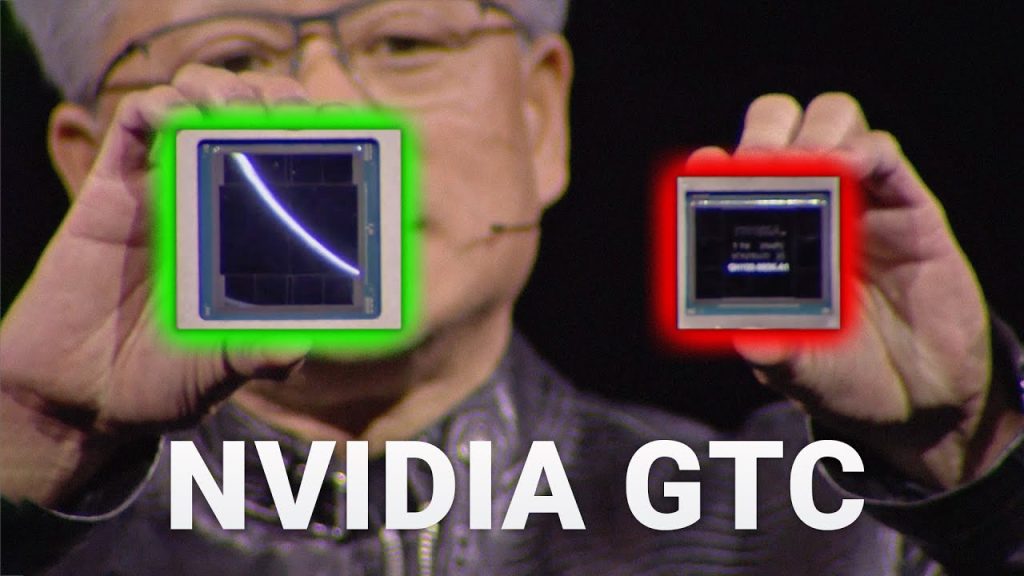Unveiling the Future: AI Innovations at the Grand Arena

Have you ever imagined chatting with a building? Or how about a video game version of planet Earth? It’s not science fiction anymore; it’s our new reality. At a recent event, held in an arena usually reserved for rock stars, the stage lit up with the latest advancements in artificial intelligence.
These weren’t just fancy claims but tangible innovations poised to transform our daily lives. From AI-powered drug discovery to robotic training in virtual worlds, the event was a peek into a future where technology melds seamlessly into our daily routines.
The Spectacle of AI Innovation
The recent GTC keynote transformed a massive arena, typically associated with rock concerts, into a hub of artificial intelligence discourse. The grandeur of the setup matched the groundbreaking announcements made, highlighting the intersection of technology and daily life. From the ability to converse with buildings to advancements in AI-driven drug discovery, the event showcased a cascade of innovations.
Virtual Realities and Humanoid Robots
Immersive virtual worlds are no longer just a gamer’s paradise but a canvas for serious innovation. At the keynote, the spotlight was on using these environments for everything from product design to robot training. These applications demonstrate the versatility of virtual realities in enhancing real-world interactions and productivity.
Among the showcased technologies were humanoid robots and other automated creatures designed to perform tasks or provide companionship, proving that the line between digital and physical is increasingly blurring.
Simulation and Design: The New Frontier
Advanced simulations are revolutionizing how we approach factory and production design. By digitally mimicking real-world layouts, efficiency can increase by up to 50%. The technology allows for extensive testing of various configurations before any physical construction begins, ensuring optimal setups from the start.
In practice, these simulations are not just theoretical; they serve as a blueprint that guides the actual construction process, ensuring that the final build aligns perfectly with the initially designed parameters.
The implications for labor and operations management are significant, offering a glimpse into a future where digital precision shapes physical realities.
Harnessing Hyper-Speed AI
The discourse around AI’s capabilities in the keynote was nothing short of awe-inspiring. With computational speeds achieving a 10,000-fold increase in just a decade, AI now enables complex image and video synthesis from simple text prompts.
This exponential growth in computational power allows researchers and developers to tackle previously unimaginable tasks in real-time, making advanced AI more accessible to the wider public.
AI-Powered Environmental and Health Solutions
AI’s potential to impact critical areas such as environmental forecasting and healthcare was a key focus. Innovations include the ability to predict weather patterns more accurately, which could significantly enhance disaster preparedness and response.
In healthcare, AI-designed drugs are set to revolutionize the industry. With the capability to perform virtual screenings, these new medicines could enter the market more quickly, offering hope for treatment of various ailments.
The integration of AI in these fields not only promises to save lives but also changes the way we prepare for and respond to natural and health crises.
The Age of Digital Doppelgängers
One of the most mind-blowing announcements was the creation of a digital twin of planet Earth. This vast simulation aims to assist in everything from urban planning to disaster management, utilizing complex data and predictive analytics to mirror real-world conditions.
This digital Earth model offers a powerful tool for policy makers and scientists alike, enabling them to visualize changes and potential impacts before they happen, thereby optimizing decision-making processes.
As we wrap up our exploration of the incredible advancements in artificial intelligence showcased at a recent event, we’re left in awe of the transformative potential AI holds. From enhancing our daily lives with improved disaster response strategies to revolutionizing industries with efficient production designs, the scope of AI’s impact is vast. The future, it seems, is not just about technological evolution, but about merging these capabilities seamlessly into every aspect of our lives, making the once-impossible now possible.





